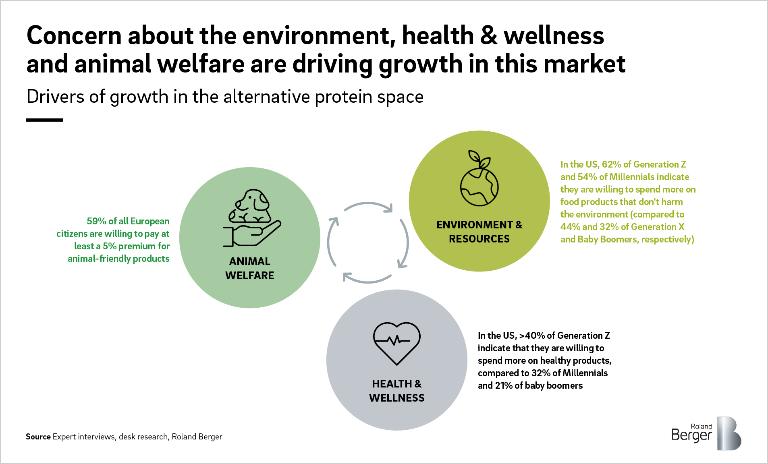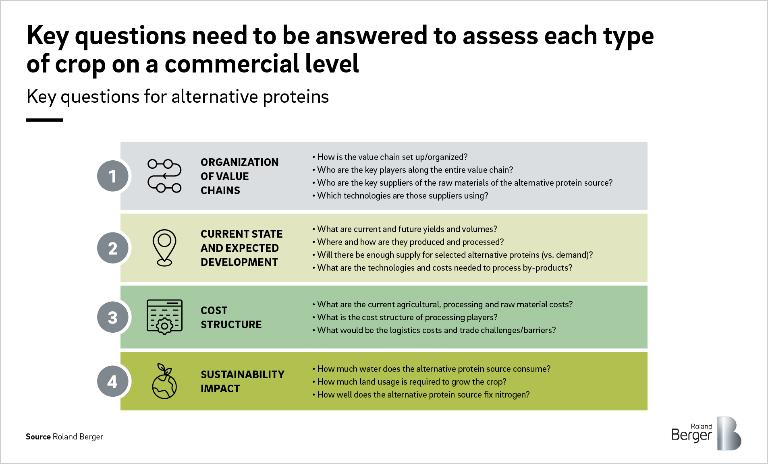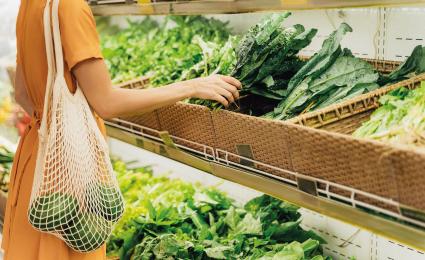Roland Berger's study 'The Protein Revolution' zooms in on the increasing demand for protein. To meet this demand sustainably, sources of alternative protein are on the rise.


Plant protein supply not keeping with demand. Can the pea save it?
Growing demand and insufficient supply are forcing changes in the alternative protein sector
Will the pea be the next big plant protein? How should agri-food companies prepare for the future? Roland Berger answers those questions and more in a new study.

After two years of steady soy-leading growth, the plant-based alternative protein market will significantly take off in the next five years, according to a recent study by Roland Berger. While consensus forecasts slightly vary, we conservatively expect the segment to grow by 12% per year.
We see a growing appetite of investors and agribusiness firms for projects upstream the value chain, aiming at developing alternative crops.
This predicted demand will not be satisfied by current production capacities, however. While soy remains the leader in price and protein quality today, it is losing market share. Since 2014, soy-based milk consumption is down 2% per year and continuing to drop in both North America and Europe. This is largely due to growing concerns over the beans' environmental record (i.e. deforestation), sizable allergenic reactions, and relationship to GMOs.
Meanwhile, other plant-based proteins are catching up as their commercialization matures. For the same period, non-soy plant proteins have grown by 16%. Consequently, food companies across the entire value chain must reconsider their position in the alternative protein market if they wish to profit from the rising demand.
Growing Demand
After conducting several expert interviews, researching the latest market reports, and cross-referencing them with our own recent projects in the plant-based protein industry, Roland Berger believes there are several key crops and one leading alternative to win the plant protein market for the foreseeable future. Furthermore, many of these crops speak to changing consumer preferences.
For example, 59% of Europeans are willing to pay upwards of 5% more for animal-friendly products. In the US, over 40% of younger generations say they will spend more on healthier products, compared to 21% of baby boomers. Similarly, over 60% of that younger demographic are willing to spend more on food products that don’t harm the environment.
All things considered, we believe the pea will be the leading plant-based protein of the future. This is based on our own full report, in addition to the many early bets being made by food companies across the entire plant-based protein supply chain. What’s more, pea production, which mostly takes place in Canada and China, is expected to double by 2025 to 550 kilotons per year.
Whatever crop ends up displacing soy as the plant protein leader, the trend is already underway and the desired crop may vary depending on the application.
"As today’s market will not be able to meet the growing demand for plant-based proteins, there is an incredible opportunity for first-movers to assume a bigger and better position in the supply chain."
Insufficient Supply
Based on the latest projections, today’s market is unable to satisfy the growing demand for plant-based proteins. The current structure is too slow to react to these growing trends, and there’s a serious disconnect between current consumer preferences and farmers choosing to plant what works today instead of what will tomorrow. This represents an incredible opportunity for first-movers to assume a competitive advantage in the supply chain.
Understanding the supply chain by crop will be instrumental when deciding which crop to bet on. Dozens of established brands such as crop traders, ingredient processors, flavor houses, and integrated manufactures of semi-finished foods are already placing bets along the plant protein supply chain. For other players, now is the time to act. They must identify which crop to bet on, where the greatest opportunities lie, and how to compete for and ultimately win the plant protein market.
By 2025, we believe the market will begin its maturing phase as consumer adoption rates and mainstream production begin to take off. Thus, if agri-food companies wish to profit from this growing demand, they cannot wait until the market fully matures. They must formulate their future strategies and place their bets today.
Looking Forward
To learn more about the future of plant-based proteins, please read our full presentation on how agri-food companies can ready the plant protein revolution, in which we share additional insights, best practices based on our recent advisory roles and research, as well as important questions for the industry to consider. For additional information, please contact a regional Roland Berger expert today.
Register now to download the full publication to learn more about the future of plant-based proteins and get regular insights into Retail & Consumer Goods topics.






